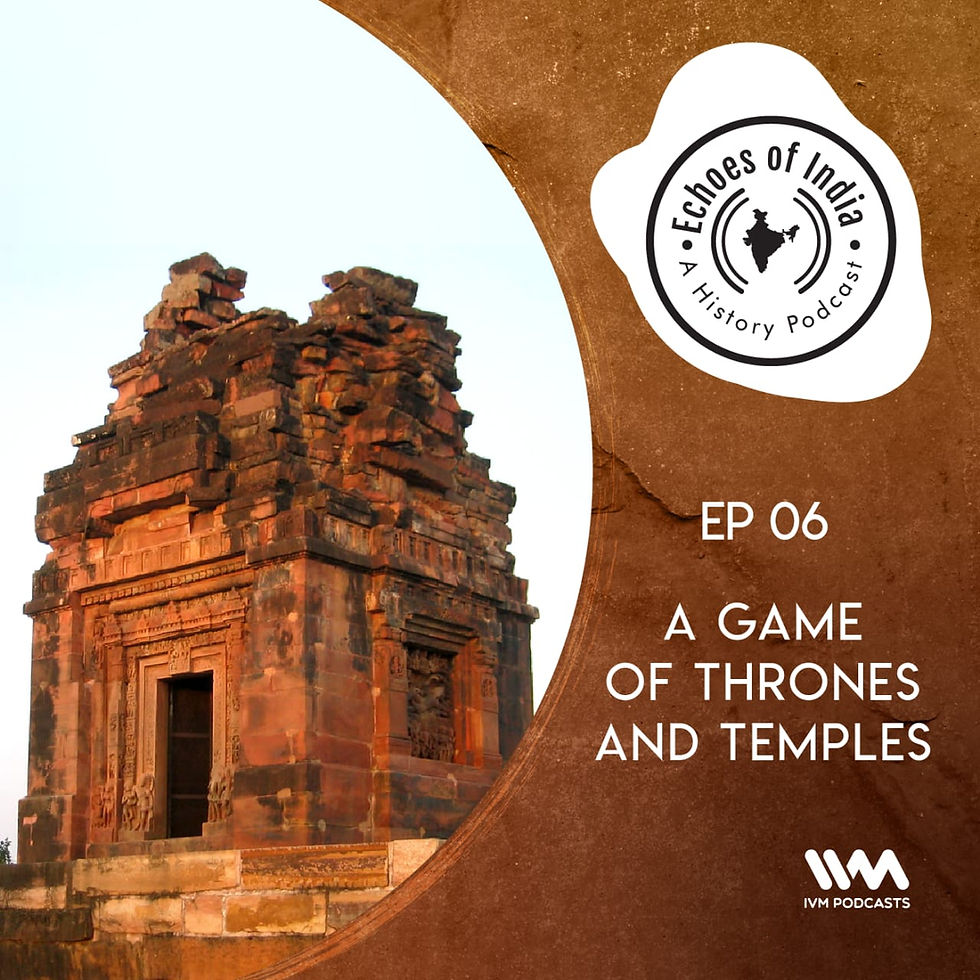18. A Game of Thrones and Temples
- Anirudh Kanisetti
- May 1, 2019
- 2 min read
The same century that saw the collapse of the Western Roman Empire also saw the rise of the great temple-building movements that transformed India's society and economy - but these played out in a deadly family drama that would lead to the end of the Guptas and Vakatakas.
The temple is not an institution that's "new" to South Asia - small shrines to deities have been part of religious practice for millennia, but the 4th and 5th centuries saw a radical innovation in the social and political purposes of those shrines. The amalgamation of popular movements with the splendid metaphysics of the Vedas led to a wave of temple-building activity that would define the subcontinent's history in deep and unprecedented ways, and the Guptas and Vakatakas were right in the thick of it.
Notes and Sources below.

Voice Credits (in order of appearance):
Narrator - Anirudh
Bhagavad Gita, Atibhavati - Zoya
Chandogya Upanishad, Pravarasena - Abbas
Notes
On Vakataka history, art, and religion, the foundational text in many ways is Bakker, Hans. The Vakatakas: An Essay in Hindu Iconology. Groningen, 1997. Get it here, it's really cool. https://zenodo.org/record/1565702#.XMkMFOgzZEY
On how temple ritual was identified with older Vedic traditions, see Willis, Michael D. “The Formation of Temple Ritual in the Gupta Period: Puja and Pancamahayajna.” In Gouriswar Bhattacharya Felicitation Volume, 1–21.
On the Guptas using temples as an aspect of political power, see McKnight, John Michael. “The Gupta Temple Movement: A Study of the Political Aspects of the Early Hindu Temple.” Thesis, McMaster University, 1973.
On Vakataka temple-building activity, see Bakker, Hans. “Throne and Temple: Political Power and Religious Prestige in Vidarbha.” In The Sacred Centre as the Focus of Political Interest, edited by Hans Bakker, 83–100. Groningen, 1992.
On Skandagupta and his half-brother, see Tandon, Pankaj. “The Succession after Kumāragupta I.” Journal of the Royal Asiatic Society, 2014.
On Saivism, see Bisschop, Peter, and Peter Bisschop. “Saivism in the Gupta-Vakataka Age.” Journal of the Royal Asiatic Society 4 (2010): 477–88.
On Gupta civil wars in Vidisha, see Bakker, Hans, Martin Brandtner, and Shishir Kumar Panda. "A Theatre of Broken Dreams: Vidiśā in the Days of Gupta Hegemony." Interrogating History: Essays for Hermann Kulke (2006): 165-87.
My interpretation of Prabhavati's life draws on Bakker, Hans. “Religion and Politics in the Eastern Vākātaka Kingdom.” South Asian Studies 18, no. 1 (2002): 1–24.
For a spectacular survey of recent archaeological discoveries about the Vakatakas, see Bakker, Hans (ed). “Mansar: The Discovery of Pravaresvara and Pravarapura.” Proceedings of a Symposium at the British Museum. University of Groningen, 2008. https://core.ac.uk/download/pdf/148172096.pdf. It's AWESOME.
Pravarasena's inscription comes from Mirashi, VV. Corpus Inscriptionem Indicarum IV: Inscriptions of the Vakatakas. 1960
Atibhavati's quotes are adapted from Bakker, Hans, and Harunaga Isaacson. "The Ramtek Inscriptions II: The Vākāṭaka Inscription in the Kevala-Narasiṃha Temple." Bulletin of the School of Oriental and African Studies 56, no. 1 (1993): 46-74.
Comments